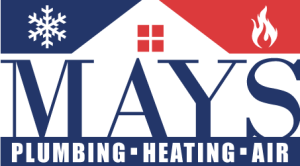Plumb the Depths: Essential Plumbing Know-How for Homeowners – From Basics to Tech Trends
As homeowners, you have served many roles: electrician, housekeeper, landscaper, and now, possibly plumber. Understanding the basic nuances of your home’s plumbing system can be beneficial, including when an immediate fix is required, or when planning renovations that involve your plumbing system. In today’s technologically-driven lifestyle, emerging technology trends in plumbing can also lead to smarter home solutions. This article will demystify *plumbing basics* and help you decipher the tech trends redefining this area.
A Guide Through the Plumbing Jungle
Every homeowner has likely dealt with minor plumbing issues like a leaky faucet or a clogged drain. Becoming your own handyman requires an elementary understanding of the system. Here, we navigate through the *plumbing jungle*.
The Water Supply System
The **water supply system** is responsible for directing clean, potable water throughout your home. The main water line, usually from a street-side water main, directs the flow into the house. Pressure is an essential element in this system, allowing water to reach the entire dwelling, including upstairs locations.
The Drain-Water Vent System (DWV)
While the water supply system brings clean water, the **Drain-Water Vent System (DWV)** takes care of the waste and gas output. The system uses slope rather than pressure to properly channel waste through drain pipes and out of the dwelling.
The Kitchen and Bathroom Fixtures
The most common areas in a home where plumbing issues occur are the kitchen and bathroom. Homeowners should acquaint themselves with the basics of each fixture, such as sinks, faucets, toilets, showerheads, and garbage disposal systems.
Plumbing Materials and Tools
Understanding the materials and tools involved in common plumbing repairs will go a long way in protecting your home from water-related damage. Familiarise yourself with essential items, including pipes (PVC, PEX, copper), fittings (couplings, elbows, tees), and valves (gate, globe, ball, check). Alongside these, basic tools like a pipe wrench, plunger, toilet snake, and plumber’s tape should form part of your essential toolkit.
Emerging Trends in Plumbing Technology
As household technologies advance steadily, homeowners are exploring smarter, more efficient ways to manage household chores, including plumbing problems. Here’s a look towards the future with some emerging *tech trends in the plumbing industry*.
Smart Leak Detection Systems
These modern leak detection devices, especially those with *smart home integration* capacity, can be lifesavers by catching leaks before they cause significant damage. Some systems can automatically shut off the water supply to prevent flooding, while smartphone-connected ones provide real-time updates on your home’s water consumption.
Tankless Water Heaters
**Tankless water heaters**, also known as demand-type or instantaneous water heaters, provide hot water only as it is needed. They don’t produce the standby energy losses associated with storage water heaters, which can save you money. Digital controls allow you to manipulate temperature settings and view system diagnostics easily.
Touchless Faucets and Toilets
Combining the advantage of convenience with efficient water use, *touchless appliances* have been a hit in commercial settings and slowly finding their way into residential homes. Touchless faucets and toilets use motion sensors to operate, which can also help reduce the spread of germs.
Greywater Recycling Systems
In our quest to utilise resources more efficiently, homeowners are turning towards **greywater recycling systems**. These units collect gently used water from your bathroom sinks, showers, tubs, and washing machines, treating and storing it for non-potable use like flushing toilets or watering the garden.
Advanced Pipe Relining Technologies
Pipe relining, a non-invasive plumbing solution that rehabilitates damaged sewer lines, is being revolutionised with advanced technologies. New methods, such as **Cured-In-Place Pipe (CIPP) relining**, use a felt tube impregnated with special resin to repair damaged pipes without excavation, saving time and reducing disruption to your property.
The world of plumbing may seem intimidating at first, but with this basic understanding of its components and tools, you’re better prepared for your do-it-yourself fixes. And even as you get comfortable with home plumbing, keep a keen eye on the emerging technologies in this field. Going with the wave of trends may involve an adjustment period, but it often leads to greater convenience, lower costs, and most importantly, more sustainable living.
+




